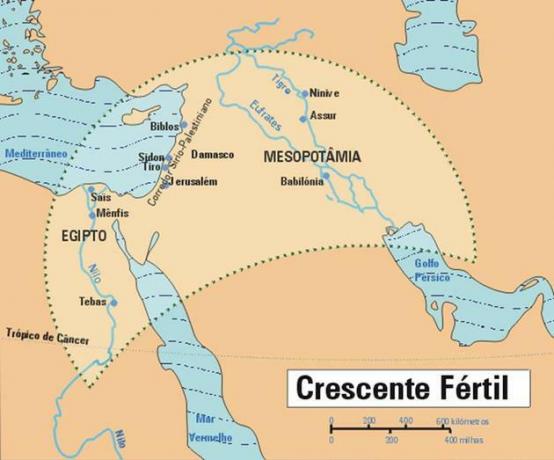Historical sources are traces of the past, created or modified by the human being and that are used by the historian as a way of investigating historical events and their unfolding in the present.
Virtually anything can be a historical source. However, it wasn't always like that. Historians during the 19th century believed that only sources marked by objectivity and neutrality could be used to study the past.
These were the written and official sources, such as public archives, State documentation, legislative letters, among others.
The expansion in the range of options took place in the 20th century, from the Annales School, an important French school of historians.
Are examples from historical sources: documents, photographs, music, electronic games, magazines, internet pages, modifications to the landscape, architectural structures and any other object/space created or altered by humans over time historic.
Categorizations of historical sources
History lists different types of historical sources, including textual documents, archaeological remains and sources of material culture, pictorial representations and oral history.
Are textual documents that can be considered historical sources: letters, newspapers, magazines, records, among others.
archaeological remains are pieces found through excavations in archaeological sites (spaces where evidence of human occupation was preserved): ceramic pieces, vases, instruments are examples.
pictorial representations are artifacts based on the language of visual communication. Therefore, pictures, photographs or drawings fit this item.
Finally, the oral history it is linked to the oral testimony of an individual who witnessed a certain historical event. The construction of this historical source takes place from thematic interviews, where the historian has the possibility to analyze the said and the unsaid. An answer that the interviewee refuses to answer, for example, can be interpreted by the researcher and become a question of their research.
Material and immaterial sources
Another categorization is whether or not there is a “support” for the source. When analyzing a source, we must understand the separation between support and content.
- Support: physical material that holds the font. Example: the pages of a book;
- Content: the information present in that support. Example: the narrative written in that book.
Thus, material sources are those where the source is the support itself. An example is a radio set.
Immaterial sources are those that do not admit support or that this is not essential for their existence as a source. Dances, gestures, cuisine and regional expressions are examples.
Direct and indirect sources
Regarding the temporal position, we can classify historical sources into direct and indirect sources. The direct ones are those produced during the events studied. Indirect are materials produced by historians from direct sources.
For example, assuming a historiographical study on the weapons used in World War II:
- Direct source: any weapon used in combat;
- Indirect source: a book written by another researcher on the same topic using other historical sources.
However, it is important to note that a historical source will never be absolute direct or indirect. This will vary depending on the topic of the research to be carried out.
Using the example of the Second World War again, if the research to be carried out by the historian whether about the history of World War II research over time, the book would be a source direct.
Voluntary and involuntary sources
Another important category concerns the way the font was conceived. We divide into two groups:
- Voluntary sources: sources that were produced with the intention of becoming an object of historical research. Example: an autobiography of an artist.
- Involuntary sources: sources that were produced with another purpose and that later began to be studied. Example: a diary.
Unintentional sources tend to present information that might not have been presented in the case of voluntary sources, as they were not conceived by someone who imagined elaborating them for a research historical.
This was one of the reasons that led historians of the Annales School to privilege them over voluntary or intentional sources.
The Annales School and the expansion of historical sources
The Annales Magazine, authored by Marc Bloch and Lucien Febvre, brought new meanings and questions to the historiographical production.
From the Annales onwards, historians began to understand a new world of sources to be analyzed. This also occurred because other disciplines began to be adopted as auxiliaries in the process of historical research.
Geography, Linguistics and Psychology are examples of new analyzes that have been carried out on the past, understanding the landscape, the word and the gesture as important sources in the construction of the research historical.
If previously the exclusive focus of historiography was on political history and on highlighting great political leaders, now the “history of the commons” becomes privileged, increasing the range of possibilities in relation to the sources historical.
In this way, an agenda of a resident of northern Paraná in the 20th century is considered a historical source from the Annales. And the words he uses to refer to his customers, a search topic.
see more
- Material and Immaterial Culture
Bibliographic references
BARROS, José D'Assunção. Historical Sources: an introduction to their historiographical uses. History & Partnerships, 2019, s.d. Available in: https://www.historiaeparcerias2019.rj.anpuh.org/resources/anais/11/hep2019/1569693608_ARQUIVO_bd3da9a036a806b478945059af9aa52e.pdf. Accessed on: 04 Aug. 2022.
BARROS, José D'Assunção. Historical Sources: revisiting some essential aspects for Historical Research. Mouseion, n. 12, pp.129-159, May-Aug/2012. Available in: https://revistas.unilasalle.edu.br/index.php/Mouseion/article/view/332. Accessed on: 04 Aug. 2022.
JANOTTI, Maria de Lourdes. The book Historical Sources as a source. In: PINSKY, Carla Bassanezi. Historical Sources. ed. São Paulo: Context, 2005. pp. 9-22.
- What is History?
- 15 art questions that fell in the Enem
- 5 Art Lesson Plans for Elementary School II
- Languages, codes and their technologies: Enem
- Textual Genre Reporting
- Mathematics lesson plans for the 6th grade of EF
- remote lesson plan
- Enem Sociology Questions


